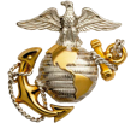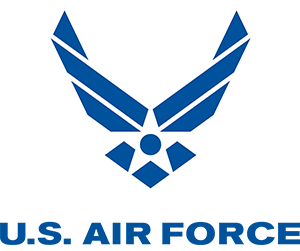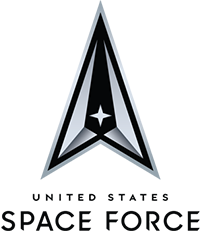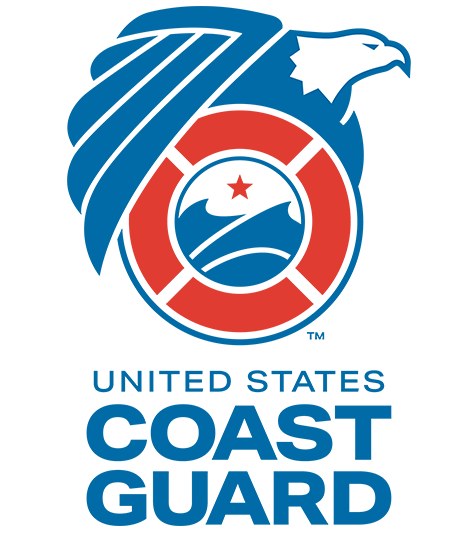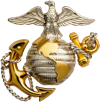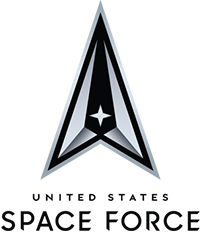Joining & Eligibility
Boot Camp
Basic Training — often called boot camp — prepares recruits for all elements of service: physical, mental and emotional. It gives service members the basic tools necessary to perform the roles that will be assigned to them for the duration of their tour. Each of the Services has its own training program, tailoring the curriculum to the specialized nature of its role in the Military.
On This Page
Boot Camp by Service
Duration
10 weeks
Location
Fort Benning
Columbus, Georgia
Fort Jackson
Columbia, South Carolina
Fort Leonard Wood
Waynesville, Missouri
Fort Sill
Lawton, Oklahoma
Fort Knox
Fort Knox, Kentucky
Physical Fitness Requirements
- Three Rep Max Deadlift
- Standing Power Throw
- Hand-Release Push-Ups
- Sprint-Drag-Carry
- Plank
- Two-Mile Run
Duration
13 weeks
Location
Marine Corps Recruit Depot, Parris Island
Parris Island, South Carolina
Marine Corps Recruit Depot, San Diego
San Diego, California
Physical Fitness Requirements
- Pull-ups or Push-ups
- Timed Plank
- Timed Three-mile Run
Duration
10 weeks
Location
Great Lakes Recruit Training Command
Great Lakes, Illinois
Physical Fitness Requirements
- Timed 1.5-mile run
- 2 sets, 30 seconds of planks
- 2 minutes of pushups
Duration
7.5 weeks
Location
Joint Base San Antonio (JBSA) Lackland
San Antonio, Texas
Physical Fitness Requirements
- Timed 1.5-mile run
- 2 minutes to complete as many correct repetitions of pushups
- 2 minutes to complete as many correct repetitions of situps
Duration
7.5 Weeks
Location
Joint Base San Antonio (JBSA) Lackland
San Antonio, Texas
Physical Fitness Requirements
- Timed 1.5-mile run
- 2 minutes to complete as many correct repetitions of pushups
- 2 minutes to complete as many correct repetitions of situps
Duration
8 weeks
Location
Cape May Coast Guard Training Center
Cape May, New Jersey
Physical Fitness Requirements
- Timed 1.5-mile run
- 1 minute of Pushups
- 1 minute of Sit-ups
Note: Active Duty, Guard and Reserve personnel all attend their respective Service's boot camp.
Boot Camp Basics: Before Boot Camp
No matter which branch of the Service you choose, Basic Training is an intense experience. The purpose of this training isn’t to “break” recruits. In fact, the combination of physical training, field exercises and classroom time makes individuals strong and capable. It’s a tough process, but a rewarding one that many service members value for life.
To succeed in boot camp, you should prepare yourself physically and mentally. Daily cardio, weight training, pushups and situps are a must. You should also practice arriving early on a regular basis and sticking to a strict schedule. You should also delegate personal affairs to family or friends so you can focus on your training. For example, you will need to figure out who will pay the bills, collect the mail and manage bank accounts while you are at boot camp.
Good to know: By enlisting, you are contractually obligated to complete boot camp and serve. However, if you find that you are incompatible with serving, you can receive an administrative discharge.
Parents Discuss Basic Training
Learn how parents faced the demands that boot camp placed upon them and their children, and the sense of accomplishment they all felt upon its completion.
Length 2:37 View TranscriptTranscription
Howard Zanit: Basic Training, having heard stories from people about that, does scare you, because I think “boot camp.”
Darlene Anderson: Boot camp is designed to, you know, break them down and to build them back up. Everything that happened at boot camp and that they learn in boot camp is for a reason, and you find out later on.
David Smith: Well, he was firm in the decision up until the day it was time for him to actually go down.
Patricia Smith: You would've thought he was going to the guillotine. Truly, I mean, he just ... you know, I think most of it was just the unknown, scared. He'd heard some horror stories, you know. They're going to be screaming at you, they're going to be doing this, that and the other.
David Smith: I think he was just really worried about surrendering his freedom and how much control was going to be over his life.
Mary McHugh: I wasn't very worried about the Basic Training because Scott had prepared himself mentally and physically. He trained to go into Basic Training. Several months before graduation, he began a physical regimen that involved about 10 miles of jogging a day.
Holly Clayman: When we said goodbye, we really tried to hold it together, and we tried not to let him see our emotion, and we did, until we turned our backs and walked out the door.
Nancy Kennon: It was the first letter that I got from her that actually made me feel good, when she said it's going pretty good, and she really liked it, and I was actually shocked just to know that, because I was really worried about her not liking it and not liking to be told what to do, and ... but she, she fit right in.
Patti Kolk: I was very proud to be able to go to his graduation ceremony, to see them dressed in their dress uniform. It was very exciting.
Robert Kennon: We was there at that graduation that day. We was trying to figure out where could we sit so we could take some good pictures, right. And I went up to one of the officers there and he asked — I asked him, we were like, "My daughter, she's in, like, C4." At that moment he goes like, "Y'all be very proud of your daughter because she's a stick," because that's one of the highest things that they can accomplish, you know, carrying that flag, and so that made me feel really, really good.
Monique Morris: My proudest moment was when I saw him at his graduation, when I was in those stands and I could actually pick his face out of that crowd. That was my proudest moment. I'd never felt that good, not even — (crying) I don't even think the day I gave birth to him I felt that good. I really was so proud.
Parents Discuss Basic Training
Boot Camp Basics: What Not To Bring
Proper packing can help ease the transition from civilian life to boot camp. The following list of what not to bring can help. Check with a recruiter for a comprehensive list.
Do not bring:
- Family
- Pets
- Expensive personal items — cameras, phones, laptops, jewelry, etc.
- Nonprescription drugs or drug paraphernalia
- Weapons of any type, including pocket knives
- Obscene or pornographic material
- Alcoholic beverages
- Playing cards/dice/dominoes
- Cigarettes/tobacco products
Good to know: This list is only an overview. For more detailed information, contact a recruiter.

Boot Camp Basics: Orientation
While each Service has different training schedules and requirements, the orientation process is basically the same across Services. During this time, new recruits might:
- Turn in enlistment packages (paperwork from the Military Entrance Processing Station [MEPS])
- Receive dental and medical exams
- Get immunizations
- Receive uniforms and training gear (shorts/sweats, T-shirts, etc.)
- Receive required haircuts (women can keep their hair long provided it can be worn within regulation)
- Create direct-deposit accounts for paychecks
Starting at orientation, the actual training begins. This varies from Service to Service and lasts between seven and 13 weeks.
Transform, Lead, Excel
Basic Training is a first step in the journey to building physical strength and resilience. It is where service members begin to learn the values, skills and determination that will help them gain the momentum needed to reach their goals and build a successful future.
Length 8:35 View TranscriptTranscription
I'm an American soldier. I am a warrior and a member of a team. Got 90 seconds, get off this bus. I serve the people of the United States. I will always put the mission first. I will never accept defeat. It is your primary position in the military. I will never quit in a single fight. I will never leave a fallen comrade.
There's no prouder tradition than serving in the United States Army, and basic combat training is your first step to becoming a respected member in the profession of ours. Soldier training is demanding, both physically and mentally, but in the end, you'll feel a sense of accomplishment that you'll carry for the rest of your life. During this 10-week training process, you'll learn important Army values, traditions, and skills such as teamwork, discipline, proper military dress, land navigation, repelling, and weapons handling.
The Army has four basic combat training locations, including Fort Moore, Georgia; Fort Jackson, South Carolina; Fort Leonard Wood, Missouri; and Fort Sill, Oklahoma. Your training location is determined by your specific Army job, which you'll learn in the advanced individual training phase. And those trainees on track to become officers will go on to officer candidate school at Fort Moore after completing their basic training. For all trainees, most nights are spent in the barracks, and every recruit is assigned a bunk and a locker. The only times you don't stay in the barracks is during an overnight field exercise. Three hot meals are provided each day during basic training at the on-post dining facility, or DFAC. The DFAC offers a variety of nutritious food, which will help keep you energized during your tough physical training. Phone calls are limited during basic training and are at the discretion of the drill sergeant. Packages with treats and snacks are discouraged; however, letters between family and trainees are highly encouraged. After you arrive at your designated training location, you'll spend your first several days in reception. Here, you'll fill out paperwork to start getting paid, receive physical exams and immunizations, get a haircut if you're male, and you'll be issued your Army uniform and other personal items. Once you complete reception, you'll move to your training company and meet the drill sergeants who will train and mentor you until graduation.
Your first week in the training company is called yellow phase. During this phase, you are introduced to military customs and courtesies, discipline, the Army ethic, values, Army history, physical readiness training, and performance optimization. As a drill sergeant, I'm here to coach, teach, and mentor. I teach and train the basics, whether it be shooting, moving, communicating. They learn the basics. I feel as though I'm kind of taking a child and molding them into something that they join the Army to be. And usually, that's to better themselves. They're coming into the Army to discipline themselves as well, to learn a new career path, something of that sort. So it's my job to show them a new way of life.
After recruits complete yellow phase, they enter their next phase of training called red phase, which lasts about 3 weeks. Here, you'll learn the fundamentals and traditions of being a professional soldier, including the warrior ethos and the soldier's creed. This phase includes daily physical training and other physical tasks such as the confidence course, team development course, repel tower, and MBC chamber. This is where you start your fitness transformation. The Army Combat Fitness Test is administered, so you will see how you do on your first PT test. This will consist of a deadlift, standing power throw, push-ups, a sprint drag carry, the plank, and a 2-mile run. And you'll learn basic soldier tasks like how to pack and load your rucksack and clean your issued weapon. The hardest part of red phase for me was definitely adjusting to living with about 40 people in a bay, ranging from ages 18 to almost 40, and different cultures and backgrounds and ethnicities, learning to work together as a team. It can definitely be one of the biggest challenges in red phase.
After red phase, you'll enter white phase. This phase lasts about 2 weeks and increases the level of fitness training and your soldiering skills, including how to set a perimeter, hand-to-hand combat drills, basic rifle marksmanship, first aid, and land navigation. It's through training such as this that you start to come together as a team and practice the leadership, resiliency, and teamwork skills you're learning. At the same time, you're gaining a new confidence. You don't have to be the strongest or the fastest; you just have to be mentally ready, and you have to push yourself through and be your own support. Every day you're going to have to give it everything you got. This isn't an easy thing to do. It's a choice to leave your job, leave your family, but ultimately, I think just paving the way for the future is important and showing your family that you can do whatever you set your mind to if you're really willing to put in the work. It's all mental, and you have to constantly tell yourself, like, you will get through it, and you will complete basic training, because that's what's going to keep you at the end of the day.
The last phase, blue phase, is about 3 weeks long and completes your transformation from civilian to soldier. During this phase, you'll learn advanced marksmanship, the proper way to throw grenades, and maneuvering techniques. You're trained to engage targets and learn how to operate and move as a small team. The end of blue phase culminates in a nighttime infiltration exercise for yourself and a 10-mile road march. This time is also where you will receive your US Army patch, which will be worn on the left shoulder of your uniform, and your black beret. The importance of this ceremony is to be able to allow the trainees to be able to recognize what it is that they've accomplished, that the script that they've listened to in the beginning lets them know the legacy of which they are now a part of, where they've been called in this whole process of they've heard "trainee, trainee," that now being able to be part of the soldier induction ceremony, that now they take that next step in their careers, in their lives, that they're no longer trainees, now they become soldiers. Your last week of basic combat training is graduation week, where you'll take your final PT test for graduation. This time also includes Family Day in addition to the graduation ceremony itself. You'll also spend time out-processing and preparing for the next phase of your Army career, which is your Advanced Individual Training. I've learned that I always have to put the team first, no matter what, and that selfless service is the most important thing a soldier could do. It's a great learning experience. It instills discipline, and I think it's overall really beneficial for society as a whole.
Basic training is not going to be easy. It's not made to be easy. The drill sergeants are going to be hard on you. That's our job. That's what we're supposed to do. Don't take it personal. Take it as a learning experience and constantly tell yourself that you can do it, and you will do it. There's no denying that basic combat training is tough, but you will find that becoming a valued member of the world's greatest army is one of your life's major accomplishments, and the skills you learn will be ones you use for the rest of your life. It's also your first step in a career as a soldier. Learning tough physical and mental skills, as well as nurturing your leadership abilities, will create limitless opportunities as you move forward in Army training. Join us and discover untapped possibilities.
Transform, Lead, Excel





